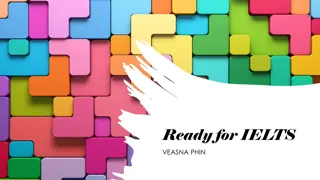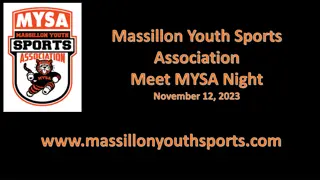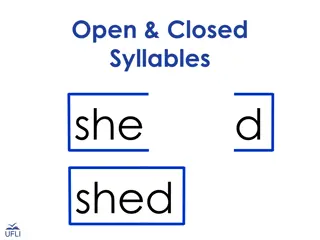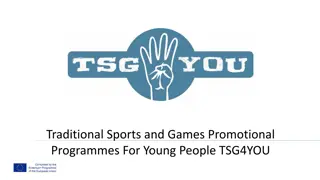Understanding Open and Closed Skills in Sports Training
Explore the distinction between open and closed motor skills in sports, along with suitable teaching methods and instructor competencies. Discover the skill spectrum and methodologies for open skills, with a focus on developing a shared understanding and enhancing practical applications through case studies.
Download Presentation

Please find below an Image/Link to download the presentation.
The content on the website is provided AS IS for your information and personal use only. It may not be sold, licensed, or shared on other websites without obtaining consent from the author. Download presentation by click this link. If you encounter any issues during the download, it is possible that the publisher has removed the file from their server.
E N D
Presentation Transcript
Open/Closed Skills Objectives: Develop a shared understanding of the distinction between the two types of skills. Identify open skill - appropriate teaching methods. Identify the open skill instructor competencies.
Skill Distinction Open Motor Skills Unstable environment Many and changing variables (internal external) Start -, mid- and end points of skill execution are to a great extent externally dictated Repeated decision making required Timing, duration and intensity of skill execution is externally (people, environment) dictated. Feedback from task, environment, perception. Closed Motor Skills Stationary environment No or very limited variables (internal external) Performer dictates timing and extent Typically done in solo performance Easier to learn Feedback is task specific
The Skill Spectrum Closed Open Mixed Teachable *Self paced * Externally paced *Massed practice * Distributed practice *Drill Fixed skill * Experimentation Learnable Tennis - Diving - Skiing Boarding - Basket Ball Golf Other?
Case Study Examine the skier in the foreground: What is your assessment? What is your development focus? What actions do you propose? To what end?
Open Skill Methodologies _______________________________________ _______________________________________ _______________________________________ _______________________________________ ________________________ _______________________________________ _______________________________________ _______________________________________ _______________________________________ _______________________________________ _______________________________________ ____________________________________
Open Skill Competencies _____________________________________ _____________________________________ _____________________________________ _____________________________________ _____________________________________ _____________________________________ _____________________________________ _____________________________________ _____________________________________ _____________________________________ _____________________________________
The Magic of Questions Past___________________________________ ______________________________________ ______________________________________ ______________________________________ _______________________ Present________________________________ ______________________________________ ______________________________________ ______________________________________ _______________________ Future_________________________________ ______________________________________
From To Technique & Instructor Focus Learner & Experience Focus Tell Questions Strive to be Understood Strive to understand Task skills Learning and Interpersonal Skills Play and experimentation Disciplined conformance Judgment Empathy Humility - Encouragement Extrinsic Feedback Intrinsic Feedback Extrinsic motivation Intrinsic motivation Knowledge Curiosity Command & Control Autonomy& Self Discovery Instructor driven process Collaborative process Technical Language VAKE + Sensory Language Managing Energy Managing Time Possibility Gap Deficit Gap
People Generally Remember.. 10% of what they READ 20% of what they HEAR 30% of what they SEE 50% of what they SEE and HEAR 70% of what they SAY or WRITE 90% of what they DO!
Parker Palmer Technique is used until the real teacher shows up .
KNAPP, B. (1967) Skill in Sport: The Atrainment of Proficiency. Routledge & Kegan Paul GALLIGAN, F. et al. (2000)Acquiring Skill In: GALLIGAN, F. et al., Advanced PE for Edexcel. 1st ed. Bath: Bath Press, p. 102-108 DAVIS, B. et al. (2000) The Nature and classification of skill. In: DAVIS, B. et al. Physical Education and the study of sport. 4th ed. Spain: Harcourt Publishers, p. 284-285























